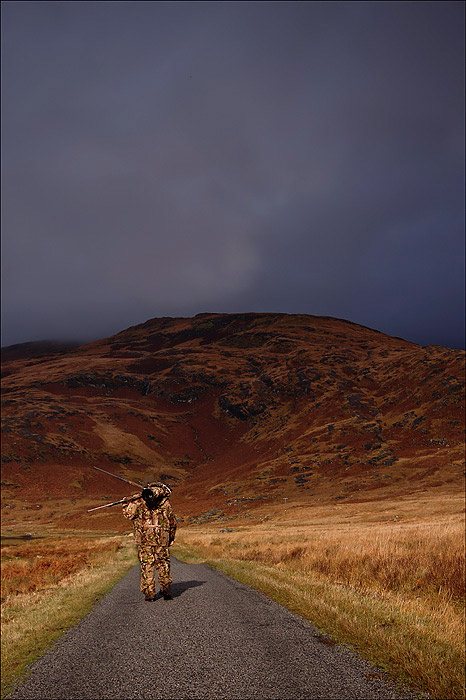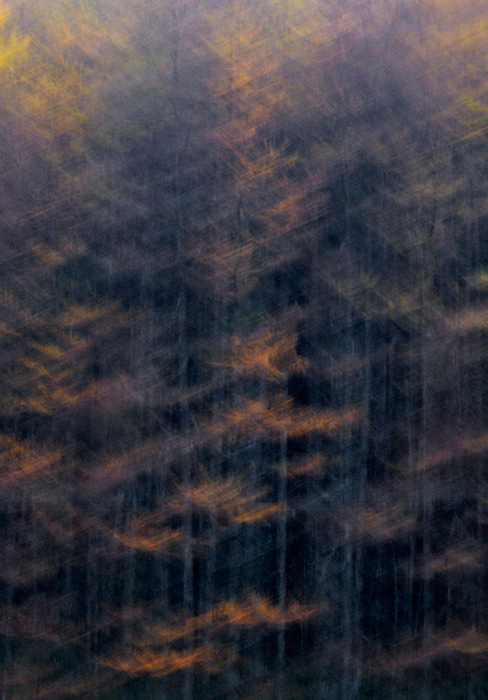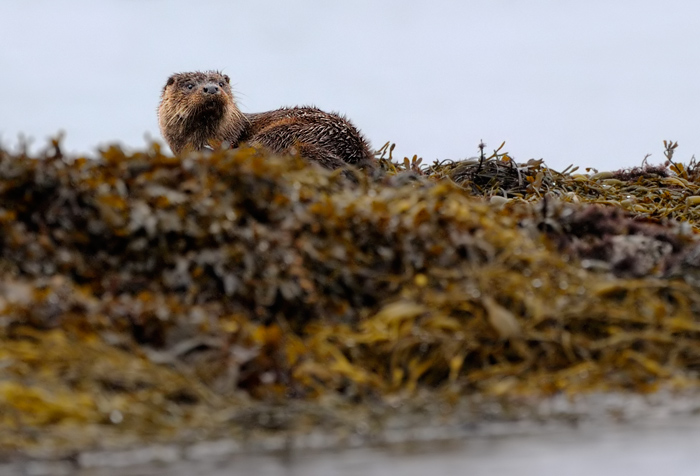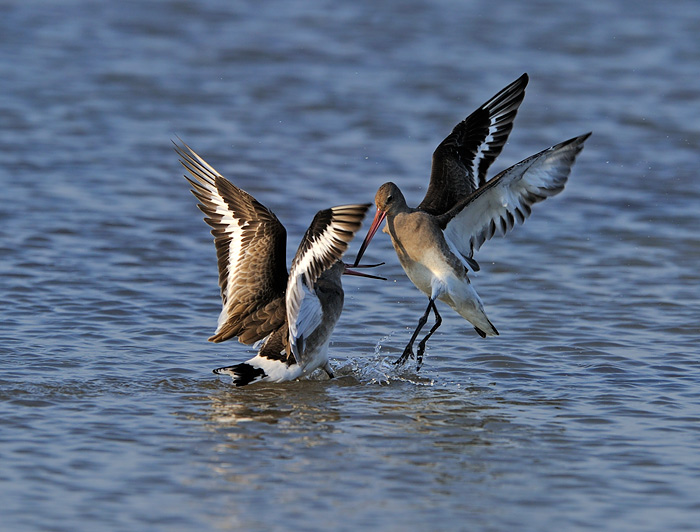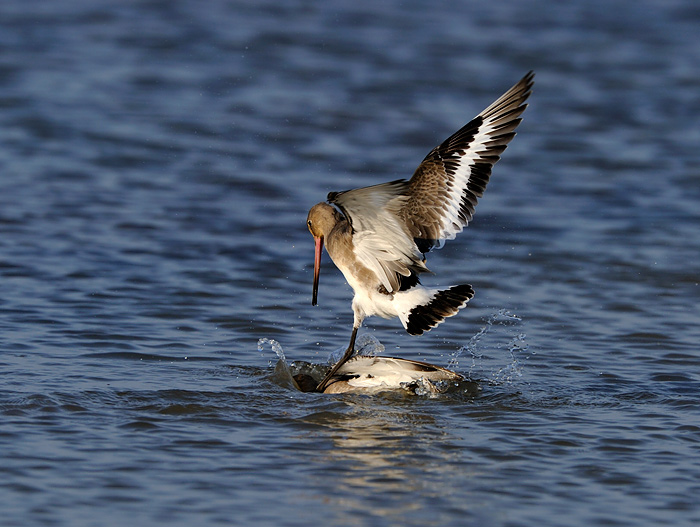A Helping Hand
Wildlife around the globe is in trouble, some species are on the brink of extinction and many others are threatened daily with habitat destruction and loss. The most endangered ones would have been long gone had it not been for a helping hand by humans. Consigned to the history books with a stuffed version in museums to show us and remind us of what we lost. Without the hard work by the many wonderful people involved in helping to keep so many different species alive today, the worlds wildlife would be in an even worse mess than it is now.

Red Squirrels could be extinct in Britain within 20 years according to a recent review of some of the UK’s mammals,Scotish wildcats, hedgehogs and mountain hares are also at risk the report suggests. That report by Oxford University’s wildlife conservation research unit warns that mammals are being hard hit by intensification of farming along with other human activity. Damage and the loss of habitat is affecting not just the wildlife but also the rural economy because it creates a countryside devoid of wildlife, discouraging walkers, birdwatchers and many others whose money should be going into this economy. One of the biggest examples of this is that of the Red Squirrel, which was widespread throughout the UK until the introduction of the Grey Squirrel from America in the 1850’s.
This visitor to our shores is not only a more effective forger of food than the red but it brings with it the lethal disease called squirrel pox virus. The greys have colonised most of the UK now with the reds only really hanging on in Scotland but even there the virus-infected greys are moving into those areas. There are a few places south of the border of Scotland where you may see these adorable mammals, where red squirrel colonies are doing better thanks to a helping hand from wildlife trusts, volunteers and others concerned with the species not completely dying out from our shores as predicted by this report in around 20 years time which makes for shocking reading.


One place in England where numbers seem to be on the up is Formby, managed by the National Trust. Formby is well known as a special place to see red squirrels and numbers have recovered well following the deadly outbreak of squirrel pox virus in 2008. My last visit to this place was on the 18th December 2008, I remember it well as I had just taken delivery of my prime lens after using the older version of the Sigma 50-500mm lens. I wanted to put the lens through its places and chose Formby.

I decided to visit Formby hoping to see and photograph these cute and adorable mammals. What I didn’t know was that Formby had just recorded their worst year, with almost 80% of the reds having caught this dreaded pox and dying. When I got there I walked around the woodland walks most of the day and never saw one squirrel all day which was really odd as the place had been recommend to me and all of the research I’d done online suggested the place was full of red squirrels. Later that day I saw a warden and he explained to me the pox disease had almost wiped out the whole red squirrel population there and you would be very lucky to see one today which was really bad to hear.

I’d not been back since that day in 2008, until this week after researching some facts and figures and it seems that things are improving through the hard work and helping hand from the wildlife trust, and many other staff involved in the research and help to save these reds. The signs are that 2011 has been a good breeding year and Formby anticipate the results of the autumn monitoring will show that red squirrel population has recovered to over 60% of the pre squirrel pox level which is amazing and a great success story.


A few squirrel feeders were introduced in one particular place within Formby to give visitors a better chance of getting close views of red squirrels. They have been reintroducing in a controlled way so that the staff there can monitor the situation and avoid the reds becoming too dependent on supplementary food, maintaining their wild ways and feeding patterns. Many of the smaller woodland birds there also benefit from the feeders with the onset of the colder weather while larger birds like pigeons and crows are excluded by the design of the feeders.


During my time there this week I found the squirrels to be extremely shy, they would come down from the tops of the trees, their crawls scratching on the bark letting you know they were on the move. They’d come to the feeders and they’d grab something, run down the tree trunk and off to find a quiet place in which to bury their bounty for another day. Once the food had been consumed in the few feeders they’d concentrate their efforts on picking up the left over’s which had fallen from those feeders and littered the forest floor.
In a flash one or more would come, in a ‘grab and go’ style and vanish off into the distance to again bury their catch and return. Often they would chase each other around making for a really comical spectacle, once that stopped they’d get on with the stashing of food.
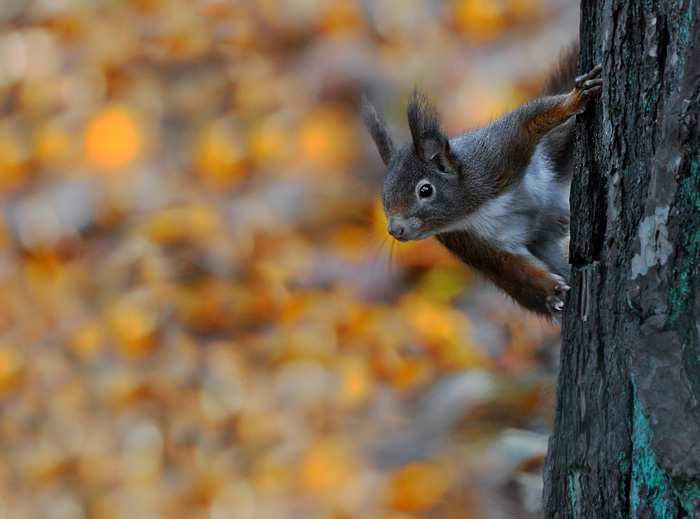

I used the natural light that was piecing through the tree canopy and often the squirrels would appear out of the dark areas and then disappear back into the shadows the next, it created a lovely effect though where I tried using the natural trees and branches they were using to compose my images on and around. Most of the time though the squirrels were on the forest floor making for that very intermit view point where you are level with the subjects eyes. I had a wonderful time and it was great to see these fellows doing so well with all the work and care in looking after their welfare by the trust.



If you’re planning a visit to Formby you have a much better chance of seeing a red squirrels on the woodland trails that form part of this area. The trust asks people to stay on these paths, don’t via off them or climb over the fences and don’t bring you own food as the wardens put a little bit of food out for them to go along with their natural diet. The reds spend much time feeding on natural foods like pine cones which are much better for them, and please respect these animals by not placing them under any stress in order for you to get an image, sit, wait and watch and you’ll get to see their patterns and bombing raids as I call them, ‘grab and go’ moves to feed then disappear back into the pine woodlands.

The threat of further squirrel pox outbreaks remains and squirrel workers are actively involved with residents in the local area in an attempt to contain outbreaks of the disease should it reoccur. Anyone seeing a grey squirrel or a sick red squirrel in the Formby area should report it to the National Trust rangers there. This guidance is laid down but the wildlife trust to protect these at risk animals. I will be going back to carry on capturing these adorable mammals and will update my blog to how they are doing in the future.

Several of my wader images from the amazing springtides in Norfolk made the papers this week, showing the beauty of this event. Click here to see The Mail online and here for the Daily Telegraph image of the day. And I had the image below printed in Wednesdays paper where it covered two pages and looked stunning with the details and colours of thousands of waders taking off.

I have put together some images that show the true beauty of this amazing event that happens in Norfolk throughout the year in this slideshow below.

Read full post











